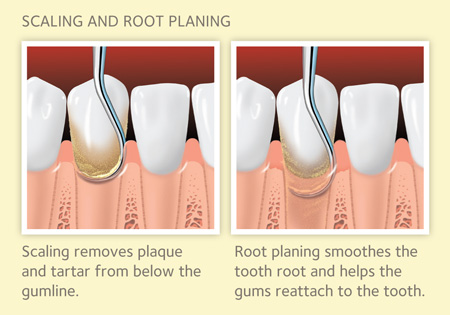Preventive Dentistry
Scaling and Root Planing
Scaling and root planing is the most common and conservative form of treatment for periodontal (gum) disease. Scaling is the removal of calculus (commonly called tartar) and plaque that attach to the tooth surfaces. The process especially targets the area below the gum line, along the root. Plaque is a sticky substance, full of bacteria, that forms on teeth. When plaque hardens over time, it is called calculus. Plaque is more likely to stick to rough surfaces. For this reason, the root surface is made smooth in a process called root planing. Root planing removes any remaining calculus and smoothes irregular areas of the root surface. We recommend oral prophylaxis after every 6 months.


Fluoride Application
Enamel, the outer layer of the crown of a tooth, is made of closely packed mineral crystals. Every day, minerals are lost and gained from inside the enamel crystals. Losing minerals is called demineralization. Gaining them back is called remineralization. Fluoride helps teeth in two ways. When children eat or drink fluoride in small doses, it enters the bloodstream and becomes part of their developing permanent teeth. Swallowed fluorides also become part of the saliva and strengthen teeth from the outside. Acids are less able to damage tooth enamel strengthened by fluoride. Children between 6 months and 16 years old who do not drink fluoridated water should take fluoride supplements. They are available as liquids for younger children and tablets for older children. Either your pediatrician or your dentist can prescribe them. Topical fluoride products are applied directly to the teeth. They include toothpaste, mouth rinses and professionally applied fluoride treatments. Professional fluoride treatments are given in a dental office.
Pit & Fissure Sealant
A sealant is a clear or tinted plastic protective coating for teeth and it is painted onto the chewing surfaces of the back teeth (molars and premolars). These are the areas where most cavities form. They protect the chewing surfaces frown tooth decay by keeping the food particles out of the grooves.

